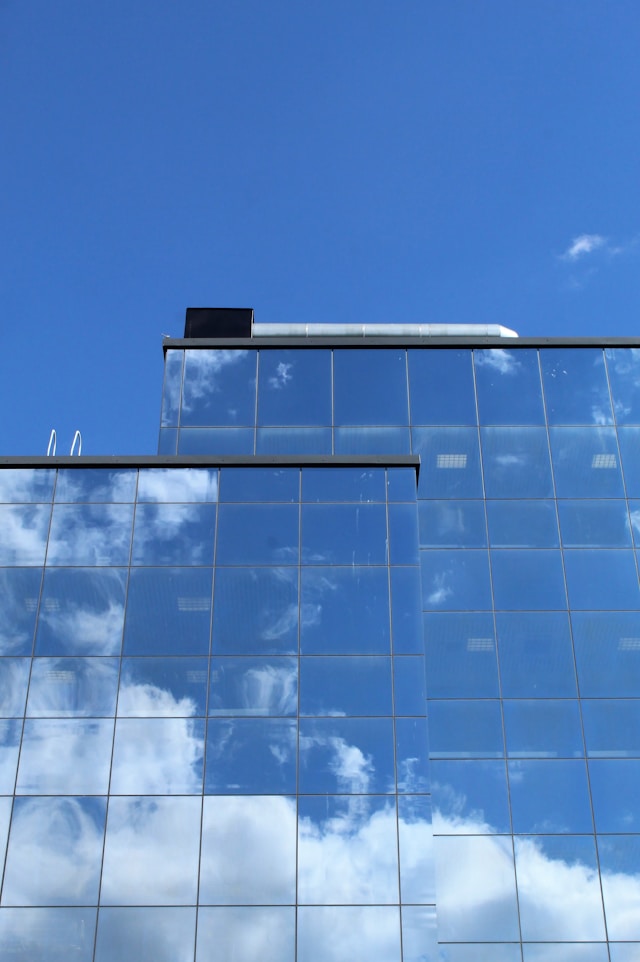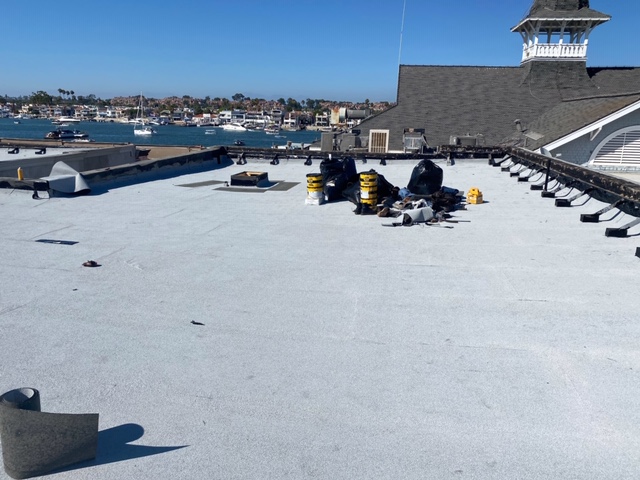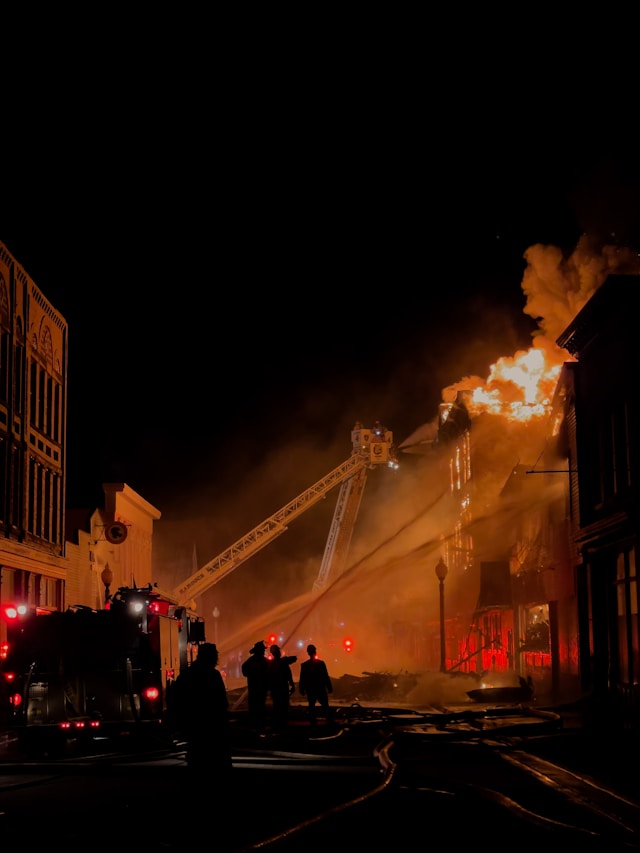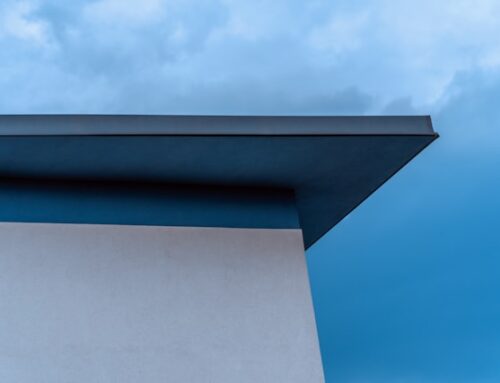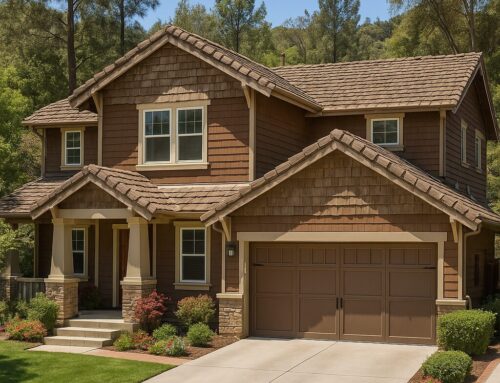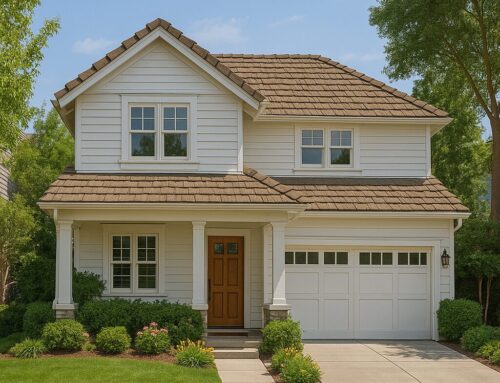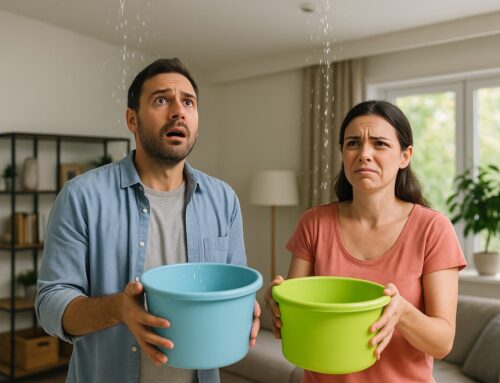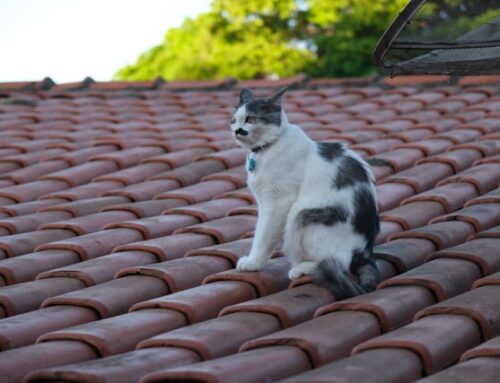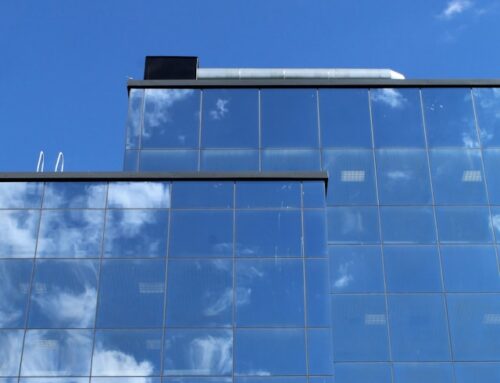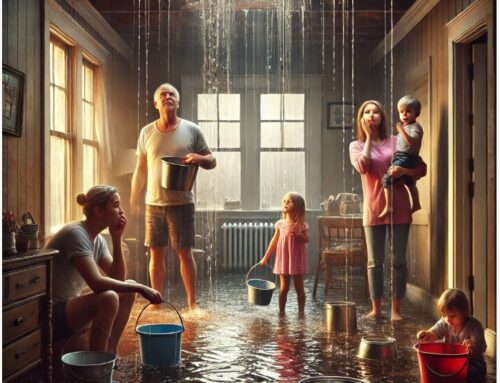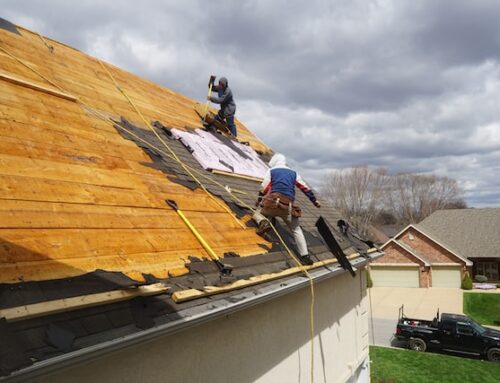The flat and low-slope roofs commonly used in Orange County commercial and industrial buildings face unique challenges. Pitched roofs shed water easily, but flat roofs do not. Ponding water, UV exposure, and foot traffic quickly degrade roof membranes, leading to leaks and costly repairs. Properly applied roof coatings extend the life of a flat roof, improve energy efficiency, and in some cases help maintain fire resistance ratings.
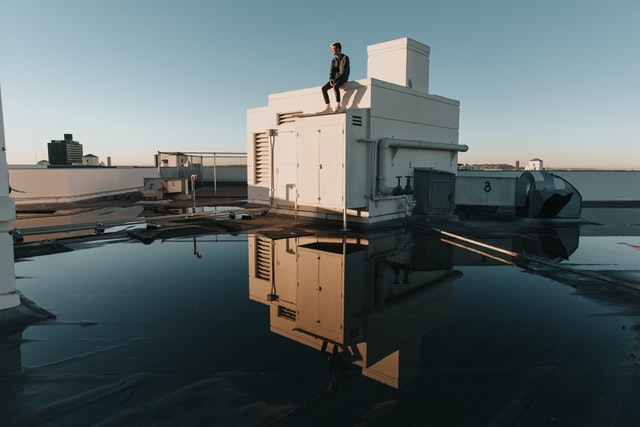
Why Commercial Flat Roofs Need Coatings
You don’t go out in the rain without an umbrella or in the strong sun without sunscreen of SPF 35 or above. Just as you need protection from the sun’s ultraviolet light and rain, flat roofs need protection too.
Water Protection
Flat roofs are prone to ponding water. Coatings create a seamless, waterproof barrier that seals joints, seams, and minor cracks. Think of it as a raincoat, but for a roof.
UV and Weather Defense
Ultraviolet light from the sun and heat accelerate the breakdown of roofing materials. Reflective roof coatings reduce surface temperature and slow aging. This keeps the building cooler and gives the roof a longer life.
Energy Efficiency
Many coatings are cool roof rated, reflecting sunlight and reducing HVAC loads. The Cool Roof Rating Council evaluates the radiative properties of roofing materials like coatings.
Cost Savings
Instead of replacing an entire flat roof, a coating system can restore the performance of the roof at a fraction of the cost of replacement.

Polyurethane Roof Coatings
Polyurethane products like those made by GACO and Enduris provide resilience to the elements, add impact resistance, and chemical exposure.
Strengths:
- Polyurethane coatings offer excellent durability and impact resistance. Many Orange County offices, warehouses, and retail centers have HVAC systems, vents, solar panels, and satellite equipment installed on the roof. Technicians and service crews frequently walk on the roof and drop tools, causing punctures or wear.
- Superior chemical resistance compared to other coating types. While Orange County air isn’t filled with chemicals, rooftop equipment, exhaust-containing oils, and cleaning solvents or chemical vapors land on the roof surface of commercial buildings. These chemicals stress other coatings, but polyurethane stands up to the challenge.
- Flexible enough to handle building movement and expansion. Flat roof surface temperatures in Orange County can swing wildly from nighttime to day, especially in warmer inland areas like Irvine. Over the years, these cycles stress seams, fasteners, and membranes. Polyurethane coatings move with the roof.
Drawbacks:
- Must be applied in a two-coat system:
- Base coat of aromatic polyurethane for adhesion and waterproofing.
- Top coat of aliphatic polyurethane for UV stability.
Using just one of the two coats isn’t effective. Both must be used to benefit from the strengths of the product
- More expensive than acrylic products. Because it is a two-part coating system, it requires more product and more labor. This increases the price.
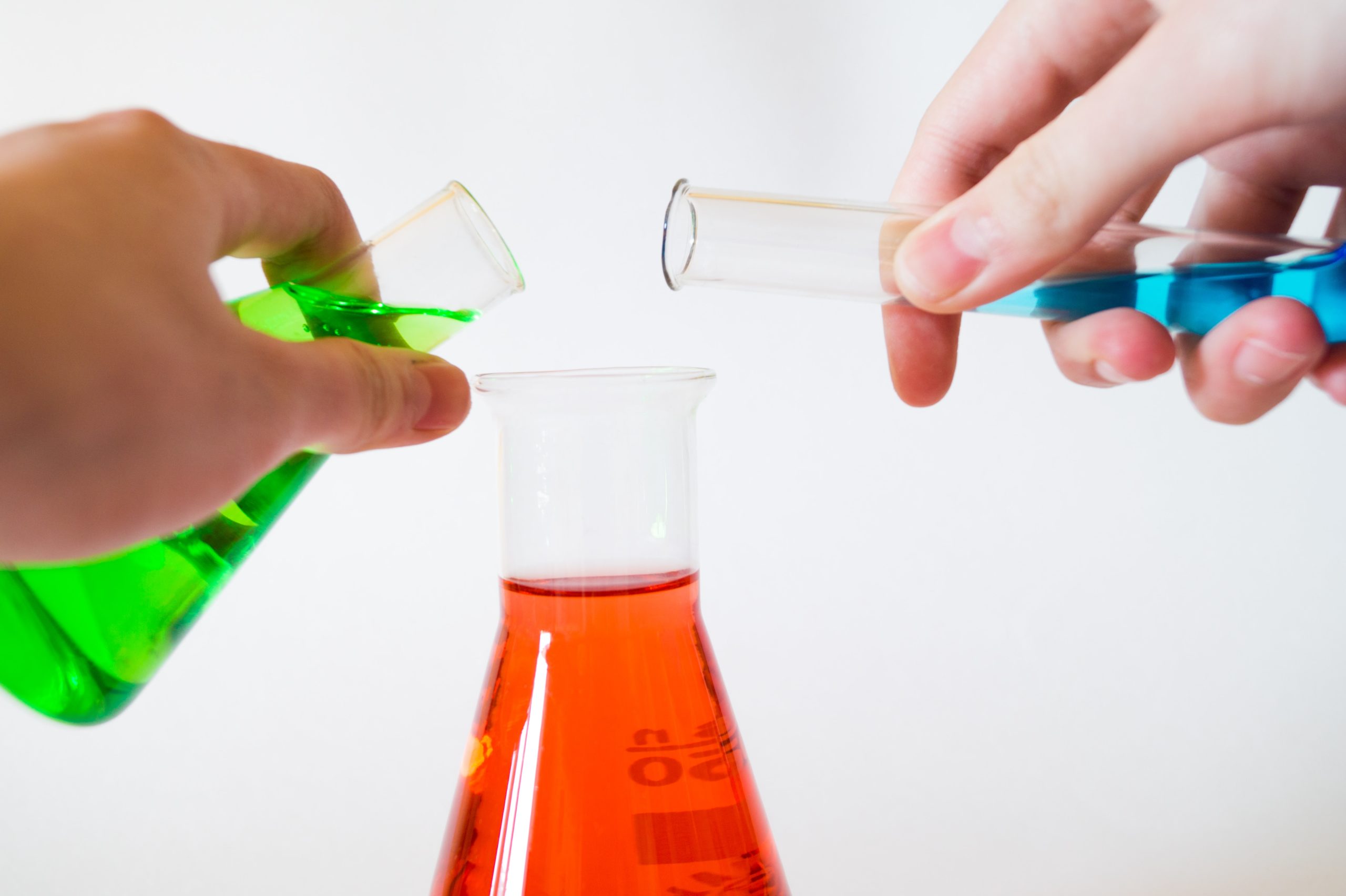
Silicone Roof Coatings
These roof coatings provide ideal protection for flat roofs in hot, sunny climates or roofs with frequent ponding water.
Strengths:
- Outstanding UV stability and weather resistance. These coating products don’t chalk or degrade under sunlight.
- Perform well in areas with ponding water, as silicone resists water absorption better than acrylics.
- High reflectivity keeps buildings cooler. These coatings shine when it comes to keeping roofs cool.
Drawbacks:
- More difficult to recoat in the future as silicone doesn’t bond well to itself without special preparation.
- Holds dirt, reducing reflectivity over time. Silicone is highly hydrophobic, so water beads up. During a rainfall, dust and debris won’t wash away as readily as with other coatings.
- More costly than acrylics.
Acrylic Roof Coatings
Acrylic coatings are well-suited for our Orange County climate. They perform well for large commercial roofs in dry climates with minimal ponding water
Strengths:
- Most cost-effective option.
- Easy to apply and recoat, making maintenance simpler.
- Highly reflective, helping reduce cooling costs.
Drawbacks:
- Acrylics are water-based products, so they offer a sub-optimal solution for roofs with ponding water.
- Less durable than polyurethane or silicone in high-traffic areas. So, not the best option where roof-mounted equipment requires frequent human interaction.
- Can lose thickness faster over time.
Commercial Roof Coatings and Fire Resistance
Coating products themselves do not directly carry a fire rating. Instead, the entire roof assembly (deck, insulation, membrane, and coating) undergoes testing for standards under:
- ASTM E108 / UL 790 – Tests for flame spread, burning brand resistance, and overall fire performance. Roof systems are then classified as:
- Class A – Highest fire resistance (required in wildfire-prone regions).
- Class B – Moderate fire resistance.
- Class C – Minimal fire resistance.
- FM Global Approvals – For commercial buildings, evaluating fire, wind, and hail resistance.
You may see some polyurethane, silicone, and acrylic coatings marketed as “helping maintain a Class A fire rating”. This means the product underwent testing with those assemblies and did not reduce the system’s fire classification. The product itself does not provide fire protection. That’s important too know with a pending La Nina and higher fire risks.
Talk to Flat Roof Coatings Pros
Flat roof coatings are not interchangeable. The right product for your commercial roof depends on the microclimate, current roof condition, and building needs. Talk to the coating pros and Crank Waterproofing, Decking, and Roofing about your roofing needs. They will help you choose the right coating for your flat roof.
Call (949) 374-2628 or schedule a consultation and estimate online.
